Here is my simple example. I have 1 vertical stack view with 1 subview. I want that subviews height to be based on the intrinsic height of the label within it, so that I can maintain a dynamic height for the entire stack view. How can this be done? Thanks
Asked
Active
Viewed 2,252 times
-1
2 Answers
2
I think you did it right. But here is the keys:
- Don't set height for stackView.
- Set label top, bottom, left, trailing constraint to view.
- Run. It should be okay on simulator.
If you found label's height seems not wrapping (neither both on storyboard or simulator), then change label's Vertical Content Hugging Priority to 750.
axunic
- 2,256
- 18
- 18
1
Try this code:
class DyanmicTextLabelViewController: UIViewController {
private var didAddConstraint = false
private let label: UILabel = {
let view = UILabel()
view.translatesAutoresizingMaskIntoConstraints = false
view.setContentHuggingPriority(.required, for: .vertical)
view.setContentCompressionResistancePriority(.required, for: .vertical)
view.text = "Layout anchors let you create constraints in an easy-to-read, compact format. They expose a number of methods for creating different types of constraints, as shown in Listing 13-1."
view.numberOfLines = 0
return view
}()
private lazy var container: UIView = {
let view = UIView()
view.translatesAutoresizingMaskIntoConstraints = false
view.addSubview(label)
view.backgroundColor = .red
return view
}()
private lazy var stackview : UIStackView = {
let view = UIStackView()
view.translatesAutoresizingMaskIntoConstraints = false
view.axis = .horizontal
view.distribution = .fill
view.addArrangedSubview(container)
return view
}()
override func loadView() {
super.loadView()
view.addSubview(stackview)
view.setNeedsUpdateConstraints()
view.backgroundColor = .white
}
override func updateViewConstraints() {
super.updateViewConstraints()
if didAddConstraint == false {
didAddConstraint = true
// stackview constraints
stackview.leftAnchor.constraint(equalTo: view.leftAnchor).isActive = true
let topAnchor = stackview.topAnchor.constraint(equalTo: view.topAnchor)
topAnchor.constant = 20
topAnchor.isActive = true
stackview.rightAnchor.constraint(equalTo: view.rightAnchor).isActive = true
// label constraint
// example for giving label a left padding
let labelLeft = label.leftAnchor.constraint(equalTo: container.leftAnchor)
labelLeft.constant = 16.0
labelLeft.isActive = true
label.topAnchor.constraint(equalTo: container.topAnchor).isActive = true
label.rightAnchor.constraint(equalTo: container.rightAnchor).isActive = true
label.bottomAnchor.constraint(equalTo: container.bottomAnchor).isActive = true
}
}
}
The important part here is the initialization of stackview, label & constraint set on label
label initialization
private let label: UILabel = {
let view = UILabel()
view.translatesAutoresizingMaskIntoConstraints = false
view.setContentHuggingPriority(.required, for: .vertical)
view.setContentCompressionResistancePriority(.required, for: .vertical)
view.text = "Layout anchors let you create constraints in an easy-to-read, compact format. They expose a number of methods for creating different types of constraints, as shown in Listing 13-1."
view.numberOfLines = 0
return view
}()
stackview initialization
private lazy var stackview : UIStackView = {
let view = UIStackView()
view.translatesAutoresizingMaskIntoConstraints = false
view.axis = .horizontal
view.distribution = .fill
view.addArrangedSubview(container)
return view
}()
label constraint
// label constraint
// example for giving label a left padding
let labelLeft = label.leftAnchor.constraint(equalTo: container.leftAnchor)
labelLeft.constant = 16.0
labelLeft.isActive = true
label.topAnchor.constraint(equalTo: container.topAnchor).isActive = true
label.rightAnchor.constraint(equalTo: container.rightAnchor).isActive = true
label.bottomAnchor.constraint(equalTo: container.bottomAnchor).isActive = true
This settings could be easily translated to storyboard.
Ratul Sharker
- 7,484
- 4
- 35
- 44

